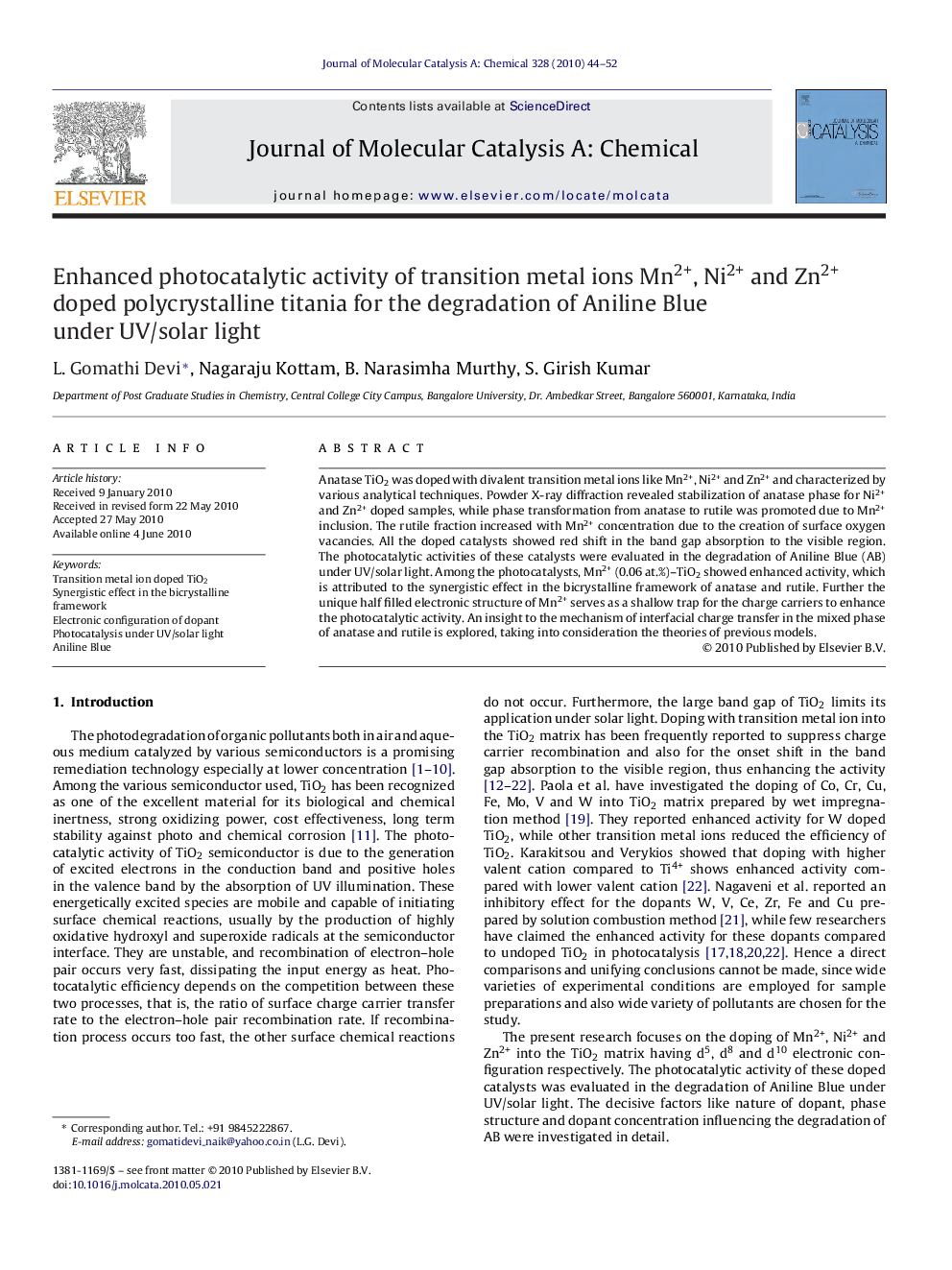| Article ID | Journal | Published Year | Pages | File Type |
|---|---|---|---|---|
| 66673 | Journal of Molecular Catalysis A: Chemical | 2010 | 9 Pages |
Anatase TiO2 was doped with divalent transition metal ions like Mn2+, Ni2+ and Zn2+ and characterized by various analytical techniques. Powder X-ray diffraction revealed stabilization of anatase phase for Ni2+ and Zn2+ doped samples, while phase transformation from anatase to rutile was promoted due to Mn2+ inclusion. The rutile fraction increased with Mn2+ concentration due to the creation of surface oxygen vacancies. All the doped catalysts showed red shift in the band gap absorption to the visible region. The photocatalytic activities of these catalysts were evaluated in the degradation of Aniline Blue (AB) under UV/solar light. Among the photocatalysts, Mn2+ (0.06 at.%)–TiO2 showed enhanced activity, which is attributed to the synergistic effect in the bicrystalline framework of anatase and rutile. Further the unique half filled electronic structure of Mn2+ serves as a shallow trap for the charge carriers to enhance the photocatalytic activity. An insight to the mechanism of interfacial charge transfer in the mixed phase of anatase and rutile is explored, taking into consideration the theories of previous models.
Graphical abstractUnder visible light excitation, vectorial electron transfer takes place from rutile conduction band to dopant (Mn2+) level or electron/lattice trapping site of anatase phase favoring effective charge separation thus enhancing photocatalytic activity.Figure optionsDownload full-size imageDownload high-quality image (49 K)Download as PowerPoint slide
